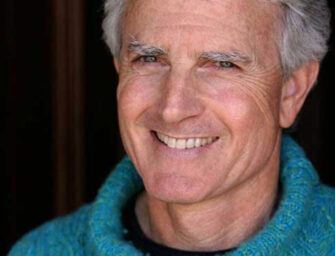Damien Girling guides us through the Seattle-born guitar scene of the early 90s and shows how its influence lives on
THE STORY
“Pure grunge! Pure noise! Pure shit!” Those were the words that a 19-year-old Mark McLaughlin wrote to the Seattle zine, Desperate Times, when describing his band Mr. Epp & The Calculations. Nearly 40 years later, and with millions of records sold, grunge is one of the most significant musical genres the world has ever seen. Despite McLaughlin’s words, it would be another 10 years before the scene would cement Seattle’s place in the history of music. And by the time it had swamped the music charts of the early 90s, McLaughlin was no longer known by that name: he was Mark Arm, singer, songwriter, and frontman of Mudhoney.
While England saw a clear and public effect from the punk revolution of the late 1970s, America’s experience was altogether different. Though the Ramones were one of punk’s most significant bands, punk was a much more underground scene in America. Hardcore, post-hardcore, and emo was linked to the rise of independent record labels. Bands such as Minor Threat, Black Flag, Hüsker Dü, Misfits, and Dead Kennedys sat at the top of those scenes and were fiercely independent, fiercely anti-establishment, and even fiercer musically.
All of those qualities had an enormous impact on the young musicians who lived in Seattle and had grown up with a musical diet that consisted of the British Invasion, hard rock, metal, and punk. As this was all going on, hair metal dominated the charts in America and left America without the punk revolution that it’s angry, artistic, and outsider youthes craved.
Three years after Arm wrote to Desperate Times he formed Green River. Though the band were together just four years, their “sleazy, raucous fusion of ‘70s hard rock and post-hardcore punk,” as Steve Huey of Allmusic described them, was hugely influential in forming the sound that came to define grunge. In March 1986, Green River featured on the Deep Six compilation album, alongside Melvins, Malfunkshun, Skin Yard, The U-Men, and Soundgarden, all of whom played a crucial role in grunge’s first generation.
Four months later, Sub Pop 100 was released and gave grunge it’s spiritual home and directors in the Sub Pop label (founded by Bruce Pavitt) and producer Jack Endino. The Sub Pop and Endino team were responsible for releasing Soundgarden’s maiden EP, Screaming Life (1987), Nirvana’s first album, Bleach (1989), and Mudhoney’s self-titled debut LP (1989). By the time of the later release, grunge had begun to make huge noise in the underground scene and over the next two years slowly became the hottest guitar sound on the planet.
Though the seeds had been sown 10 years earlier, and Sonic Youth and Alice In Chains had warmed the ground with their 1990 albums Goo and Facelift, 1991 was the year that LPs by grunge bands scorched the earth. Pearl Jam were the first band to get there, with debut LP, Ten, coming out on 27 August, before Soundgarden and Nirvana both released their albums, Badmotorfinger, and, Nevermind, on 24 September, with each album marrying the punk, metal, pop, and hard rock influences that had inspired grunge.



































Related Articles